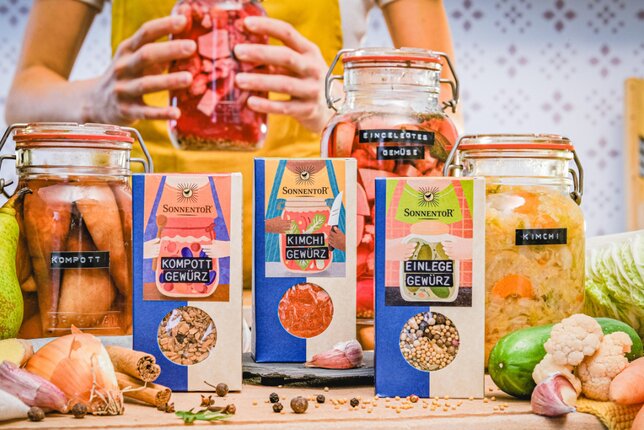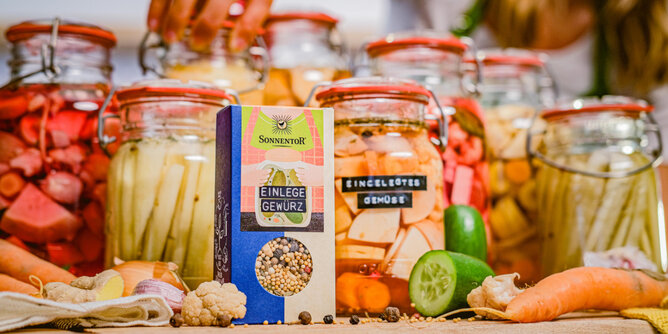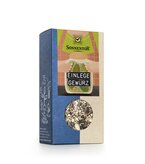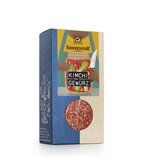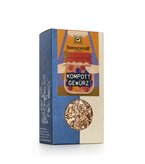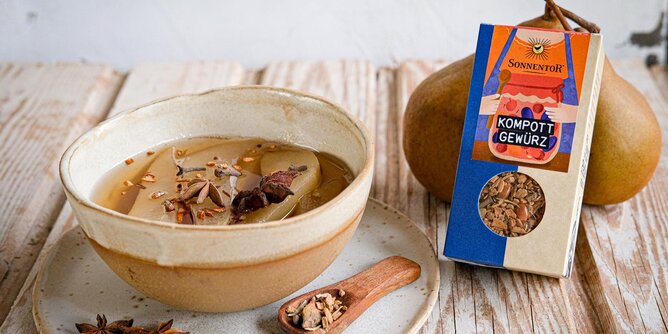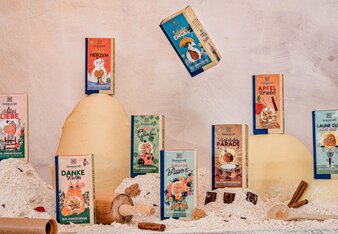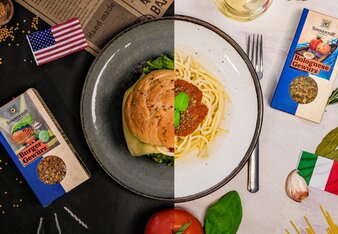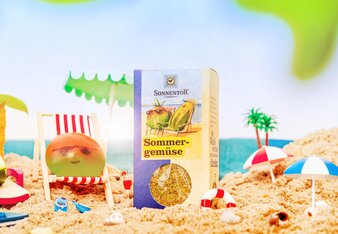Anyone with a garden will be familiar with the problem: Most fruit and vegetables are ripe at the same time. There are only so many days you want to eat courgettes! Fortunately, there are three delicious solutions for preserving fruit and vegetables.
The different pickling techniques are simple, allowing you to enjoy fruit and vegetables from the garden all winter. With our new spice mixes, you are set to pickle vegetables classically, use lactic fermentation, or turn fruit into compote or puree.
PICKLING SPICES
Are you keen on pickled vegetables? Try your hand at processing the abundance of vegetables from your garden. Our pickling spice is always the perfect choice: classic pickles are as easy to make as pickled pumpkin, crunchy onions, and there are many other pickling ideas. Get pickling!
KIMCHI SPICE
Feeling sour? Hopefully, it's just your kimchi! With this spice mix of paprika, garlic, onion, chili, and ginger, you have every reason to be happy! There are countless possibilities with this spice. You can use the ancient preservation technique of fermentation to make the hot and sour Korean classic from Chinese cabbage and radish, or come up with your own creative recipes: Sour is fun!
COMPOTE SPICE
The taste of summer holidays at Grandma's: stewed pears and elderberries! With this spice mix, you can refine desserts or preserve fruity memories of warm days in no time at all. When it's stormy and snowing outside, open a jar and conjure up summer. Our compote spice is suitable for any fruit, such as apples and plums. Get creative!
PICKLING TIPS
The top priority when pickling, preserving, and fermenting is cleanliness. To ensure your preserves last long, sterilise jars and lids with boiling water. Otherwise, you risk mould and other unwanted microorganisms making your preserves inedible.
Use fresh fruit and vegetables wherever possible to preserve as many good nutrients as possible. Wash and clean everything well before pickling. Rotten spots on the preserved food can shorten its shelf life.You can use any type of preserving jar. If using twist jars, ensure that the screw-on lids are used at most five times, as they will no longer seal properly. Discard discoloured, damaged, or rusty lids. You can also use jars with rubber rings - they are available with clips or brackets for the lid. The rubber rings must be sterilised by boiling before use. Clip-top preserving jars are particularly suitable for fermenting, or you can use a special fermentation jar.
